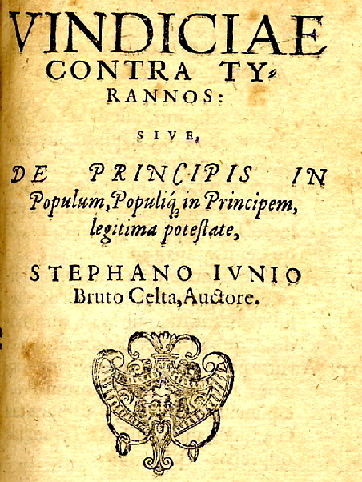(image source: historyoflaw.eu)
The Journal on European History of Law (ISSN 2042-6402) published the second issue of its fifth volume.
Research articles:
- Diemut Majer, "Höchstgerichtsbarkeit in Deutschland im 19. und 20. Jahrhundert.Ein rechtshistorischer Rückblick (The Jurisdiction of the Constitutional Justice in Germanyin 19th and 20th Century. Legally-Historical View)"
- Christoph Schmetterer: "Die Kompetenz zur Regelung des Militärstrafverfahrens in Österreich(-Ungarn)
(The Competency to Enact Rules for Military Criminal Procedure in Austria(-Hungary)" - István Stipta: "Rituale Blutanklage in Ungarn im Jahre 1883 (Ritual blood libel in Hungary in 1883)"
- Zoltán J. Tóth, "Statutory Regulation of Capital Punishment in Hungary during the Horthy Era and World War II"
- Iván Halász: " The Institutional Framework and Methods of the Implementation of Soviet Legal Ideas in the Czechoslovakia and Hungary during Stalinism"
- Ádám Rixer: "General and Legal Meaning of Civil Society in Hungary from the Beginning till 1989"
- Anna Klimaszewka: " The Reception of the French Commercial Law on the Polish Lands in the First Half of the 19th Century"
- Pawel Kacprzak: " Rechtliche und organisatorische Grundlagen des Funktionierens der Arbeitslager in Polen in den Jahren 1945 – 1950 (The Legal and Organizational Principles of the Labor Camps in Poland 1945 – the 1950s.)"
- Karol Siemazsko: "Security of Post-German Movable Property in the First Years after the End of World War II in the Light of Selected Cases Considered by the Regional Court in Gorzów Wielkopolski"
- Kamil Niewiński: "Solidarity and the Judiciary in the Polish People’s Republic in the Years 1980 – 1981"
- Miriam Laclavíková, Adriana Švecová: "Attempts to Unify and Codify Private Law during the Period of the Inter-war Czechoslovak Republic"
- Ján Štefanica: "Selected Aspects of the Creation and Development of the Rules of International Law for the Prosecution of War Criminals"
- Dmitry Poldnikov: "Magna Carta: Disentangling History from Myth in Russia"
- Katrin Treska, Engjëll Likmeta: "The Funds for the Execution of Obligations (Contract) according to the Albanian Customary Law"
- Iván Siklósi: " Treasure Trove in Roman Law, in Legal History, and in Modern Legal Systems. A Brief Summary"
- Miklós Kelemen: "Veränderung der Beschaffenheit der „annona militaris“ in der späten Kaiserzeit
(The Meaning Changes of the Annona Militaris in the Later Roman Empire)" - János Erdődy: " The Regula “nasciturus pro iam nato habetur” and the Appearance of the Expression “mulieris portio” in the Digest and its Consequences"
- Pál Sáry: "The Rules of Condemnation to the Mines in Imperial Rome"
- József Benke: " What Would ‘Praetor Paulus’ Do in ‘Post-Lehman’ World? A Comparative Analysis of Lawmakers’ Responses to the Spreading Practice of Fraudulent Transfers’ Novel Ruses in Late Roman Republic’s Liquidity Crisis and in 21st Century Hungarian ‘Post-Lehman’ Crunch: Some Morals of the ‘Paulian Action"
- Adolfo A. Diaz Bautista Cremades: "Notes about Sport Finance in Rome"
- Michael Conforti: "John Wilkes, the Wilkite Lawyers and Locke’s Appeal to Law"
- Jiří Bílý: " Marxism in the West Thought Interpretation of Law in Postwar Period"
- Jacek Zieliński: "Myth of the Truth in the Heterogeneous Society"
- Fenyvesi Csaba: A kriminalisztika tendenciái. A bűnügyi nyomozás múltja, jelene, jövője Iole Fargnoli/Stefan Rebenich (Hrsg.): Theodor Mommsen und die Bedeutung des Römischen Rechts [Tendencies in Criminalistics: The Past, Present and Future of Criminal Investigation].
- Martin Löhnig (Hrsg.): Zwischenzeit. Rechtsgeschichte der Besatzungsjahre Gerald Mund (Hrsg.): Deutschland und das Protektorat Böhmen und Mähren. Aus den deutschen diplomatischen Akten von 1939 bis 1945
- Susanne Lösch: Die coniunctio in testamentarischen Verfügungen des klassischen römischen Rechts
- Anna Margarete Seelentag: Ius pontificium cum iure civili coniunctum. Das Recht der Arrogation in klassischer Zeit











